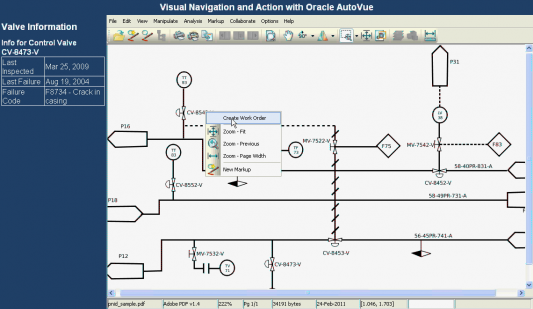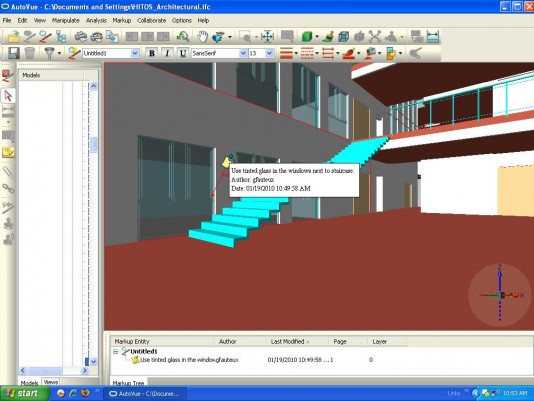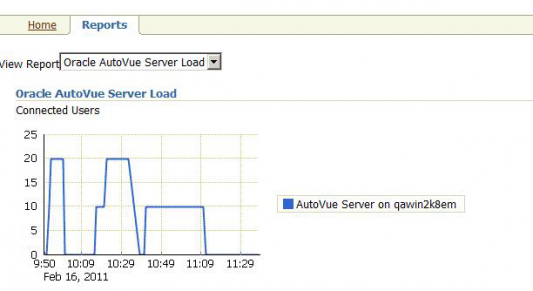The enterprise software behemoth prefers to co-exist with CAD-based PLM than take it over. New features focus on formats, platform, partners, and business processes.
Those of us who cover product development from a CAD-centric orientation often forget to mention two major players in PLM who leave the CAD to others. SAP and Oracle have every right to look at Autodesk, Dassault Systèmes, Siemens PLM Software, and PTC as swaggering pipsqueaks. After all, the combined market cap of the four (using an average of the others for Siemens PLM) is $32.6 billion. Oracle, on the other hand, has a market cap of $180 billion and SAP is at $78 billion. But the big guys realize they are in the business process automation business. Engineering process automation is just too specialized, too niche for them. So there is a general attitude of live-and-let-live between the BPA guys and the CAD-PLM guys.
A few years ago, however, Oracle got tired of leaving money on the table in manufacturing companies when it came time to install visualization outside the engineering division. So in 2007 it acquired Cimmetry Systems, makers of AutoVue software. At the time it had 10,000 customers, many of them also Oracle customers. The new AutoVue division quickly released a small update to address some simple collaboration issues with Oracle software, then went quiet for almost two years.

Fast forward to 2011, and Oracle AutoVue has released its second update since the acquisition, AutoVue 20.1. Like the 20.0 release, this one follows the guidelines established by Oracle at the acquisition: format, platform, partner development, and business process development. Here’s an overview of key new features in each area.
Format: Oracle AutoVue likes to say visualization gets them in the door, and the other stuff keeps them there. In this release AutoVue updates its existing list of supported products (it is a long list), and adds several more, including some outside of engineering. There’s new EDA compatibility as well.
Platform: Oracle AutoVue 20.1 supports a dual workflow that integrates electronics into product design, such as EDA into high tech. Teams can now visualize work-in-progress progress designs via support for Cadence non-archived files, while manufacturing engineers can perform manufacturability reviews with support for variants, overlays, and polarity. This release also improves support for paper-based processes; improvements to AutoVue web service make it possible to render and print anything visualized in AutoVue. Other platform-based improvements include increased support in the API for connecting with services from Documentum, SAP, Dassault Systèmes Enovia, and others.

Partner development: Oracle AutoVue sees its API as a crucial feature, and says it works closely with third-party solution providers. Several new third-party applications are available with the release of AutoVue 20.1. Several tie visualization to various workflow tasks, like the product that allows for walking inspection of a hospital using as-built drawings. Another product enables right-click queries to an ERP system from a visualization.

Selected third-party application vendors and end users worked with a pre-release version of Oracle AutoVue 20.1. CAD-Capture UK is creating new system integration tools for the oil and gas industry. “The latest release of Oracle’s AutoVue includes many new integration enablement capabilities that allow partners to extend visualization into broader applications,” said Chris Clark, sales director at Cad-Capture UK. “We are leveraging AutoVue’s new Hotspot capability to develop integrations between different systems that allow our customers in the oil and gas space to view and easily navigate their piping and instrumentation diagrams. The enhanced integration capabilities delivered through AutoVue’s Hotspot feature also allow us to automate the tagging of documents for easier search retrieval, which in turn helps customers improve document navigation and increase productivity.”

Harris Corporation is using the new AutoVue in manufacturing. “We have been impressed with the new capabilities and improvements for electronic computer aided design files and high tech product development workflows that are included in Oracle’s AutoVue 20.1,” said Charlie Davies, ECAE application engineer at Harris Corporation. “With AutoVue’s new overlay capability and improved support for different file formats, our manufacturing engineers can easily ensure that manufacturing personnel have what they need to quickly assemble and verify printed circuit boards by overlaying the native design on a Gerber file. As issues identified during this process can be directly conveyed back to the design engineering team via AutoVue’s digital annotations, we have been able to significantly improve our manufacturability review process.”
More information: What’s New in 20.1.0 Datasheet





